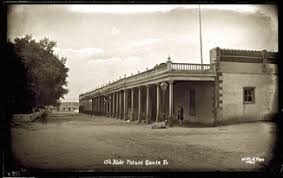With all the pomp the Spanish officer could muster so far from present-day Santa Fe, New Mexico , Lt. Facundo Melgares rode into the sprawling Pawnee village along the Republican River in Nebraska
, Lt. Facundo Melgares rode into the sprawling Pawnee village along the Republican River in Nebraska in 1806 with 300 uniformed men.
in 1806 with 300 uniformed men.
The Pawnee village had a population of nearly 1,000, among the estimated 10,000 Pawnees who resided in Nebraska. Melgares’s orders were to keep the peace. North of him, near present-day Columbus
who resided in Nebraska. Melgares’s orders were to keep the peace. North of him, near present-day Columbus , a Spanish force under Gen. Pedro De Villasur had fallen to Pawnee warriors
, a Spanish force under Gen. Pedro De Villasur had fallen to Pawnee warriors in 1720.
in 1720.
 in 1720.
in 1720.
Melgares’s mission was to arrest Meriwether Lewis and William Clark as the explorers made their way back to the United States after trespassing in Spanish territory. Spain did not recognize France’s 1803 sale of the territory to the U.S. since,  when Spain sold the territory to France three years earlier, Spain had stipulated it could not be sold to a third party without prior consent.
when Spain sold the territory to France three years earlier, Spain had stipulated it could not be sold to a third party without prior consent.
 when Spain sold the territory to France three years earlier, Spain had stipulated it could not be sold to a third party without prior consent.
when Spain sold the territory to France three years earlier, Spain had stipulated it could not be sold to a third party without prior consent.
Spanish fur traders had been working the upper reaches of the Missouri River for decades. Spanish commander Pedro Vial had a map of the West dated 1787 that not only showed the entire course of the Missouri River, but also its source at Three Forks in western Montana.
Spanish commander Pedro Vial had a map of the West dated 1787 that not only showed the entire course of the Missouri River, but also its source at Three Forks in western Montana. Lewis and Clark would not come across Three Forks until 1805.
Lewis and Clark would not come across Three Forks until 1805.
After the 1803 Louisiana Purchase, President Thomas Jefferson launched four expeditions into the vast region: Lewis and Clark were to explore the northern region by following the Missouri River; Zebulon Pike was to explore the central region by following the Kansas River; and William Dunbar, ascending the Ouachita, and Thomas Freeman,
ascending the Ouachita, and Thomas Freeman,
No comments:
Post a Comment